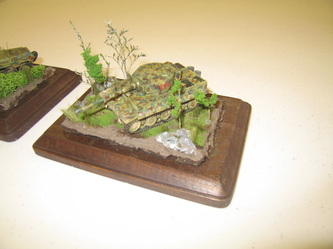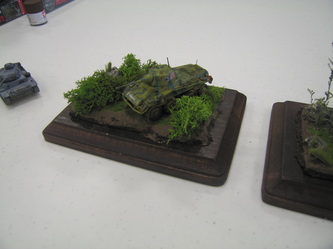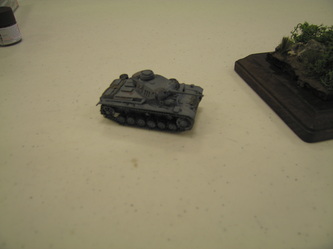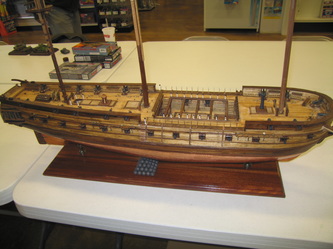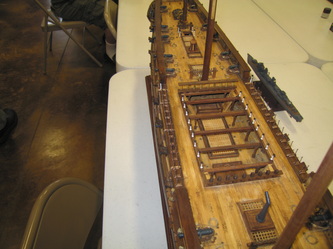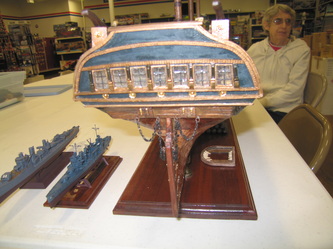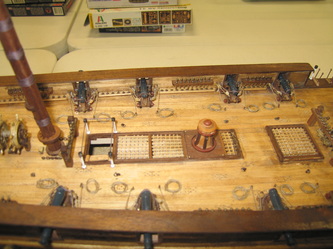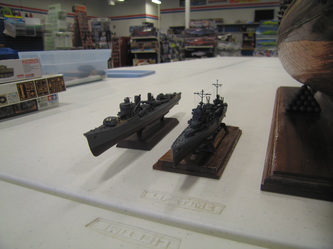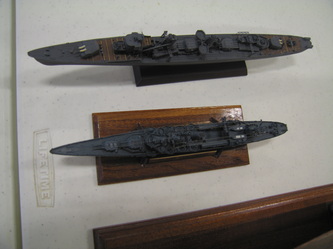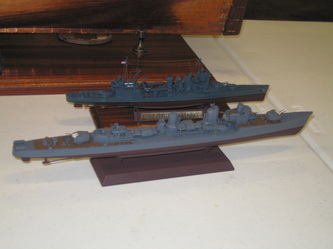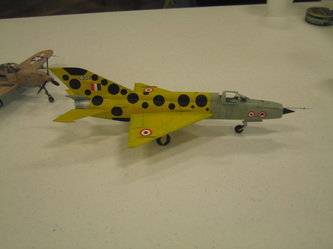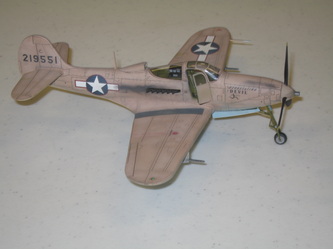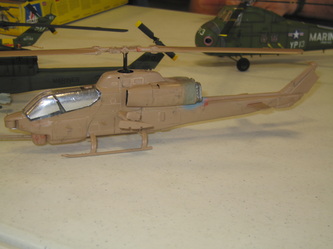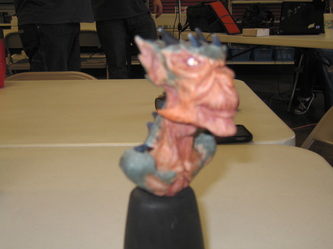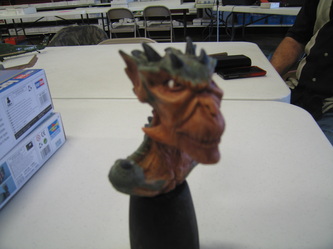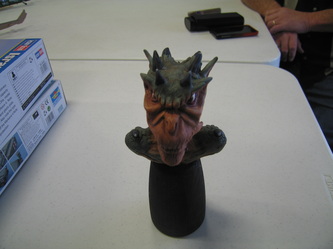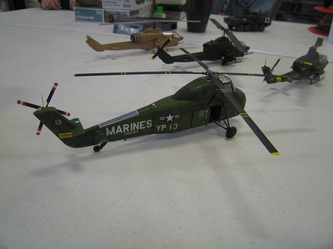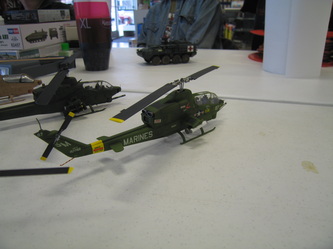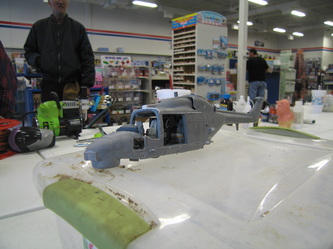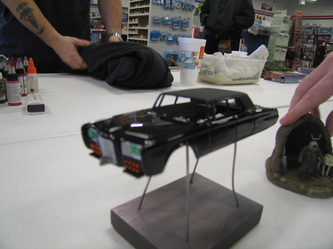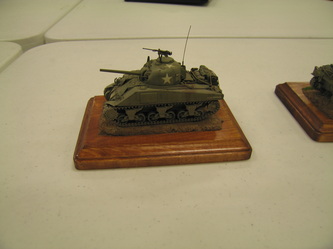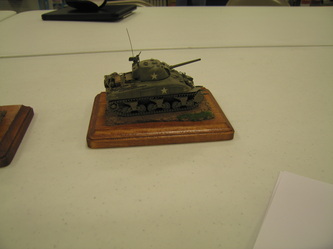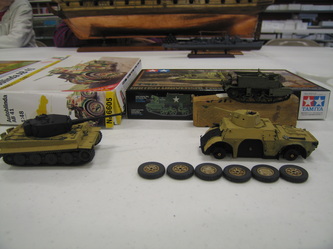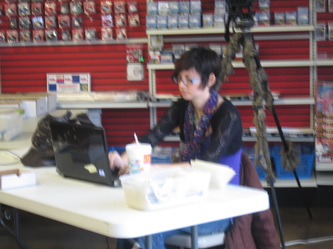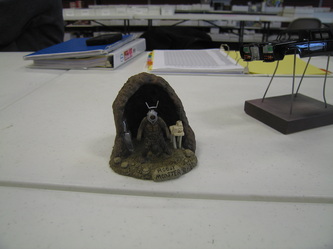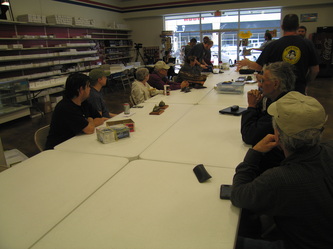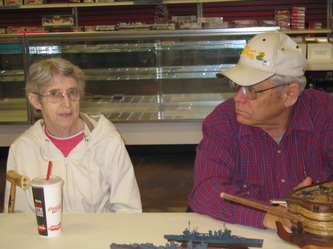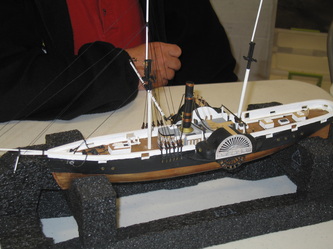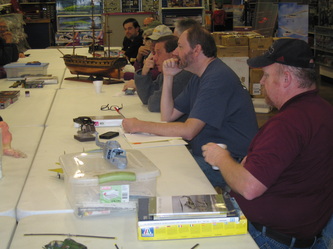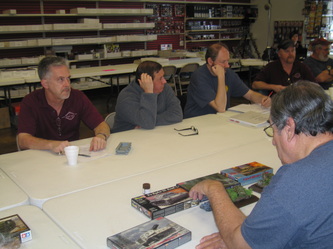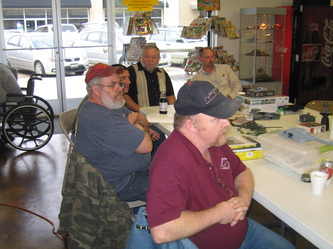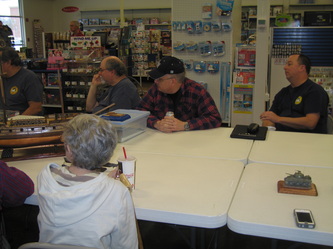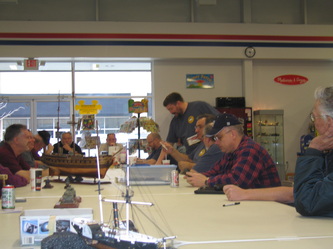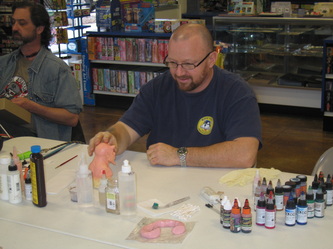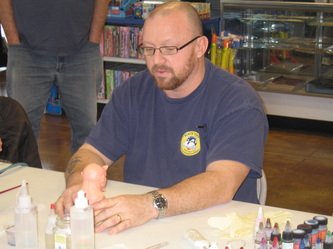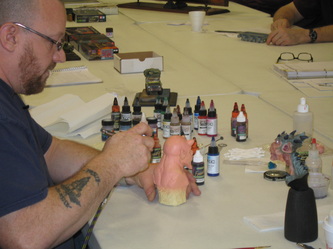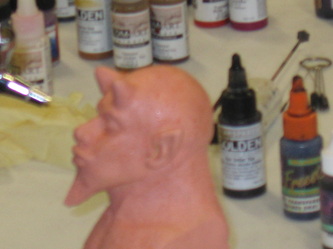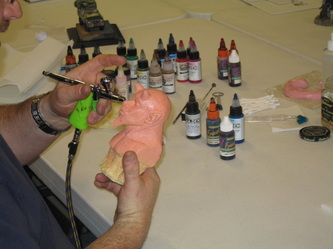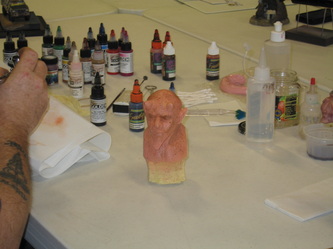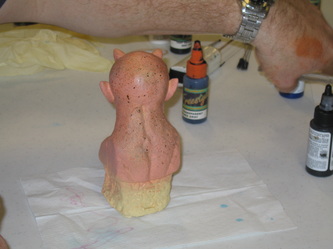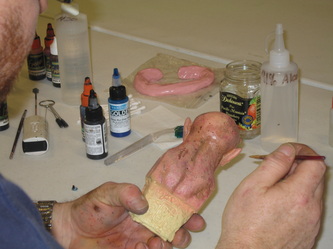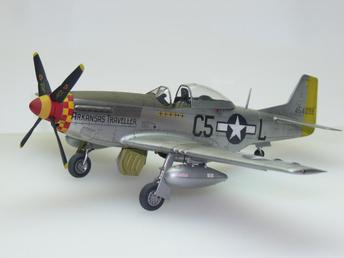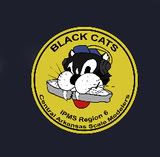If you wish to donate books and receive a tax deduction, Veronica Stewart, librarian will research your titles and determine their exact value. For central Arkansas modelers, this is a great opportunity to spend an afternoon with a cup of coffee from the school cafe and visit the collection first hand.
|
One of the coolest things Little Rock modelers have done is donate over 300 books to the automotive library at Pulaski Tech South. This collection consists of "how to books", all sorts of reference books on models, and covers all genres such as military, figures, automotive and aircraft.If you would like to see a listing of current titles, go to Pulaski Tech's website, go to library and view the model collection.
If you wish to donate books and receive a tax deduction, Veronica Stewart, librarian will research your titles and determine their exact value. For central Arkansas modelers, this is a great opportunity to spend an afternoon with a cup of coffee from the school cafe and visit the collection first hand.
0 Comments
This message is to alert you that tomorrow is Valentine's Day. We need to remember to show our love to those people or that person who is supportive of us in our hobby. Sometimes our hobby becomes all-encompassing in our life so tomorrow is the day to shake our self out of it and show our gratitude to the person we love.
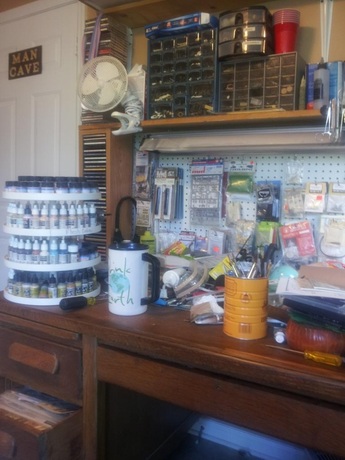 I love seeing other modeler's workshops! Pictures like these always show me ways of organization and different tools that I don't have. Steve is a great modeler so it is always nice to see how he put his workshop together. I would like pictures of other modeling workshops submitted to the Scratching Post for display. So please take pictures of your modeling space and send them to me. Remember, this is one case where larger is not necessarily better! In this installment of Armor Corner, we’re going to talk tanks, and let other AFVs alone for the time being. We’ll start by discussing some important facts about these armored beasties. First of all, a tank is an offensive weapon. As such, it is not uniformly protected. A tank’s thickest armor is always on the front of the vehicle, facing the enemy. The sides of a tank’s turret and hull are the next most heavily armored. Its rear end is its most vulnerable spot. During WWII many German tanks were so heavily armored that the more lightly armored and armed U.S. tanks could only kill them from the rear. The two most thickly armored parts of a tank are the glacis plate, the upper nose of its hull, and the mantlet, the plate which shields the gun mounting at the front of the turret. One of the greatest innovations in tank designs during the Second World War was sloped armor. When armor is sloped to the angle of attack rather than being perpendicular to it (i.e., vertical), it protects much better for any given thickness of armor plate. A tank’s gun uses direct fire to do its destruction, hurling a projectile straight at its targets at great velocity. The howitzer of a self-propelled artillery vehicle, on the other hand, lobs shells at its targets indirectly; its targets may, in fact, be miles away. In WWII most anti-tank projectiles were solid shot. They did their damage by penetrating a vehicle’s armor and then bouncing around inside it. Later in that war and after, high explosive anti-tank rounds were developed which literally melt a hole in armor plate, spraying the interior of a stricken vehicle with molten metal, with devastating results. A good tank gun is able to fire a variety of shells; high explosive for use against enemy infantry or fortifications, anti-tank (solid shot or high explosive), smoke shells, etc. In general, a tank’s gun is rated by its caliber, the internal diameter of the barrel, measured in millimeters. Thus, a 75mm shell is 75 millimeters thick, not long. Another important factor in rating a tank’s gun is barrel length. For instance, reference to a 50mm L60 gun means a gun with a 50mm diameter and a length of 60 x 50mm, or 3 meters. Given the same caliber, a gun with a longer tube will throw a shell with a greater velocity, and velocity is the name of the game. But a tank’s cannon is not its only weapon. All tanks have a coaxial machine gun, mounted next to the main gun in the turret front. One of this weapon’s main uses, since it is lined up exactly with the larger weapon, is ranging – firing tracer rounds at a target to see if the main gun is on line for a hit. In the “good old days” of WWII, tanks were also equipped with a hull machine gun, located in the front of the vehicle’s chassis next to the driver’s position. In those days a five-man crew was pretty much standard – commander, gunner, loader, hull machine gunner/radio operator, and driver. Tanks these days have dispensed with the hull machine gun, and use a four-man crew == three men if the vehicle has an automatic loader for the main gun. As in WWII, though, today’s tanks usually have machine guns mounted atop the turret for anti-personnel or anti-aircraft use. Another common tank weapon is a launcher for small anti-personnel charges. Such a weapon is used to get pesky (and dangerous) enemy infantry off a tank’s back, much like a high-explosive fly swatter. So far, we have discussed two of the “big three” of tank design and function – protection and firepower. The third element is mobility. It has often and truly been said that a good tank design is a compromise of these three elements. A tank should have as much protection as possible, if for no other reason than maximizing crew morale, but if a tank’s armor is made too thick, it will be so heavy and so slow as to be practically useless. A sluggish armored behemoth will be outflanked and destroyed in a fast-moving mobile war. The same applies to firepower. Tank firepower has escalated tremendously since WWII, going from a caliber of 20mm to a current average of 120mm for main guns. If designers try to mount too large a weapon in a tank, however, it has the same effect as too much armor – a larger, weightier, and hence a slower vehicle. Today’s main battle tanks (MBTs) are about as heavy as the most thickly armored vehicles to see service with the German army in WWII, but they are much more mobile and mechanically reliable than those earlier armored giants, thanks to such innovations as the powerful turbine engine mounted in America’s M-1 MBT. The M-1 is capable of a top speed of 55 mph – amazing for a 60-plus ton vehicle. Its speed is governed down to 40 mph, though, for the simple reason that the treads and other suspension components don’t stand up well to high-speed maneuvers. There you have the most important facts about tanks, ancient and modern. Tank design has evolved a great deal over the years, but one thing that has not changed is the role of the tank in warfare. We’ll discuss that next time. Yesterday was CASM’s monthly meeting. I hate to admit it, but I was in a modeling funk before the meeting. I haven’t worked on a model in over two months due to life’s circumstances taking a toll on my energy. The circumstances were nothing drastic but they had taken my mind off of modeling and eventually I just stopped going out to the modeling hut. One day led to another and I was just out of the habit of going and relaxing with my hobby. I had even stopped lurking on modeling websites to see what others had done. I was just a big fat walrus sitting on the couch and watching meaningless television shows to pass the evening. At the meeting yesterday, Rusty put on an extended demonstration on different airbrushing techniques he uses when painting large scale figures. It was a practice run for him for a similar demonstration he was asked to present at the Atlanta Figure Show this coming weekend. The demonstration, by the way, will be posted on the Scratching Post for you all to watch. I highly recommend its viewing. Rusty is a highly regarded figure painter who has received national recognition. Different guys in the club brought models they had completed. I recommend looking at the pictures posted on the scratching post of the models brought. The pictures will be delayed because I left my camera at Hobbytown and won’t be able to pick it up until Friday. Bob and Mona were able to attend and Bob brought his WIP of the HMS Surprise that was absolutely gorgeous. It was good seeing Bob and Mona again. Brent brought his WIP of the Green Hornet’s Black Beauty. Ken from PTC had assisted him in spraying auto clearcoat and the finish was glass smooth and perfect. It was gorgeous. Lloyd was able to attend. I haven’t seen him for a while due to health problems and he brought several beautiful models. It was really good to see Lloyd and chat with him. Matt and Cliff brought some 1/72nd scale armor. It has been really fun to watch them grow in their modeling skills. Ron brought his New Jersey Devil and showed considerable advancement in his painting skills. Daris brought in a host of completed helicopters. There were others who I have not included but enjoyed their models equally as much as the ones I listed. You’ll see them all when you see the pictures. The models were nice and the people were better. Seeing everyone and looking at their models energized my modeling juices. When I got home I wanted to run out to the hut and dive back into my modeling projects. Attending the meeting was just the inspiration I needed to pull me out of the funk. If any of you are experiencing the “funk,” I recommend you attend a gathering of modelers to recharge your juices. If you live in Central Arkansas come to our next meeting or the next PTC modeling class. If you are from another area of the country or world, I recommend attending the most local gathering of modelers. The gathering together of people who are in like minds regarding a topic can relieve the drain of everyday life. It truly is the frosting on the cake. Thanks for the great meeting yesterday CASM modelers! |
Archives
February 2017
|
